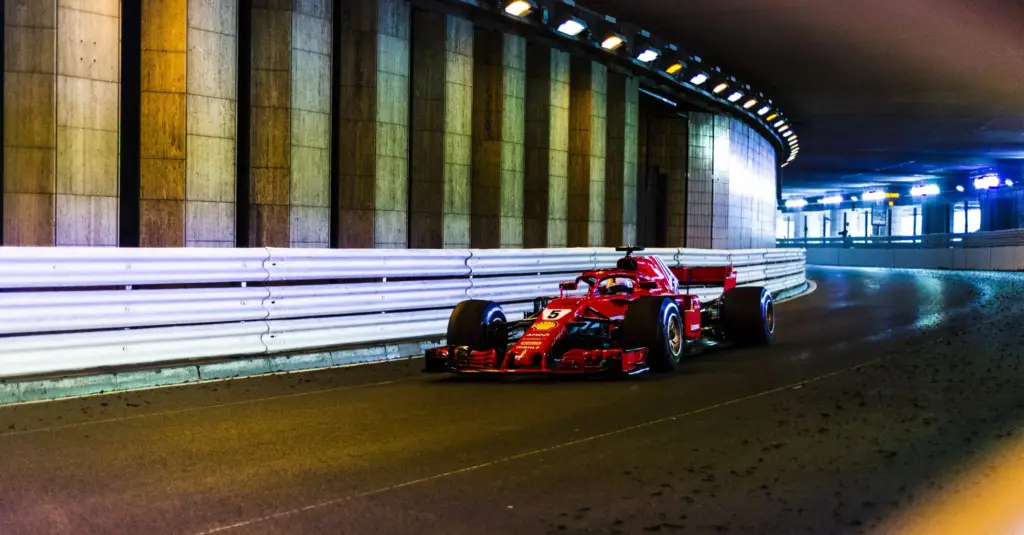The Monaco Grand Prix is one of the most iconic races in the Formula 1 calendar. Taking place on the winding streets of Monte Carlo, this track presents a unique blend of history, glamour, and unparalleled technical challenges. Let’s take an in-depth look at what an F1 driver goes through while navigating this iconic circuit.
F1worldwide.com Recommends
- Monaco F1 Grand Prix – the Ultimate Guide
- Canadian Grand Prix History | F1 Legends, Facts and Highlights
- Canadian Grand Prix F1 : A Lap Around the Circuit Gilles Villeneuve
- The Ultimate Guide to the Spanish Grand Prix
- Spanish Grand Prix Circuit: A Driver’s Perspective
Characteristics of the Monaco Grand Prix Circuit

Despite being set within a city, the Monaco GP isn’t about top speeds. Rather, it’s a test of precision and agility. With narrow streets and tight corners, the average speeds here are much lower than at other circuits.
The track surface is rougher than conventional circuits due to its everyday use by public traffic. Thus, tire wear is substantial. Soft and ultra-soft compounds are typically preferred, offering grip but at the cost of higher degradation.
Monaco Grand Prix – Straights and Speeds

The Monaco Grand Prix is less about outright speed, and instead is more focused on the event, and what to represents.
The typical speeds that are achieved as listed below.
- Start/Finish Straight: Cars can reach up to 290 km/h before the Sainte-Dévote corner.
- Tunnel Straight: After the Casino, cars dive into the tunnel hitting around 300 km/h, the fastest point on the track.
Monaco Grand Prix – Corner by Corner Analysis
The track layout exudes history, and many of the corners are iconic.
Monaco Grand Prix – Sainte-Dévote (Turn 1)
A heavy braking zone, drivers drop down to about 80 km/h, trying to clip the apex and avoid the barriers on the outside. G-forces here can reach up to 2.5G.
Monaco Grand Prix – Casino (Turn 3 to 5)

This is a quick sequence of corners. Cars slow to 140 km/h for the entry, using the full width of the track, and exit at around 160 km/h. G-forces of around 2G.
Monaco Grand Prix – Hairpin (Turn 6)

This is the tightest corner in F1 and many an F1 driver has been caught out.
Cars take this at a mere 50 km/h, using full steering lock.
Monaco GP – Tunnel Exit (Turn 9)
Exiting at around 280 km/h, drivers endure about 2.3G as they fight understeer and potential tire wall collisions.
Monaco GP – Nouvelle Chicane (Turn 10-11)

After the high-speed tunnel, braking hard to 80 km/h for a quick chicane. Braking G-forces peak at 4G.
Monaco Grand Prix – Tabac (Turn 12)
Tabac is approached at 220 km/h, drivers brake to 130 km/h, feeling 2.7G.
Monaco GP – Piscine (Turns 13-16)
A rapid left-right-left-right sequence, taken between 140-160 km/h, demands precision and balance.
Monaco GP – La Rascasse (Turn 17)
Another iconic corner. Entering at 80 km/h, it’s all about positioning for the final corner.
Monaco GP – Anthony Noghes (Turn 18)
Exiting at 110 km/h onto the main straight, drivers feel a pull of around 1.5G.
Throughout the race, it’s not just about speed. Precision, timing, and strategy play crucial roles. One wrong move, a missed braking point, or a slight miscalculation can result in contact with the barriers.
Monaco GP – Conclusion
The Monaco Grand Prix is an ultimate test of a driver’s skill and courage. It might not have the highest speeds in F1, but the demands it places on drivers and teams are second to none. Every turn is an opportunity, every straight a challenge. Conquering Monaco isn’t just about being fast—it’s about being perfect.

